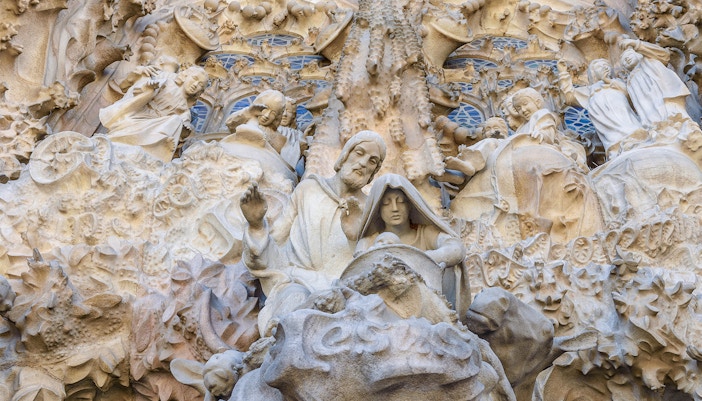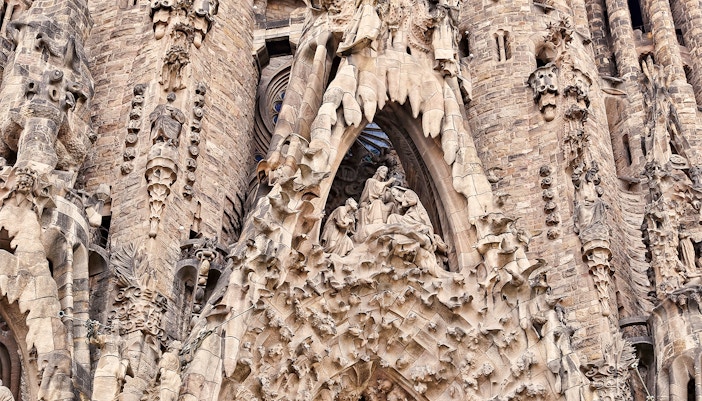- The Glory Facade is one of the three entrances of the Sagrada Familia Basilica in Barcelona.
- It was designed by the renowned Catalan architect Antoni Gaudí.
- Symbolically, the facade explores themes of the afterlife, including death, the Last Judgment, and heaven.
- It features a rich array of sculptures and intricate details, depicting angels, demons, and various biblical figures, all reflecting Gaudí's distinctive architectural style and deep spiritual vision for the basilica.


























